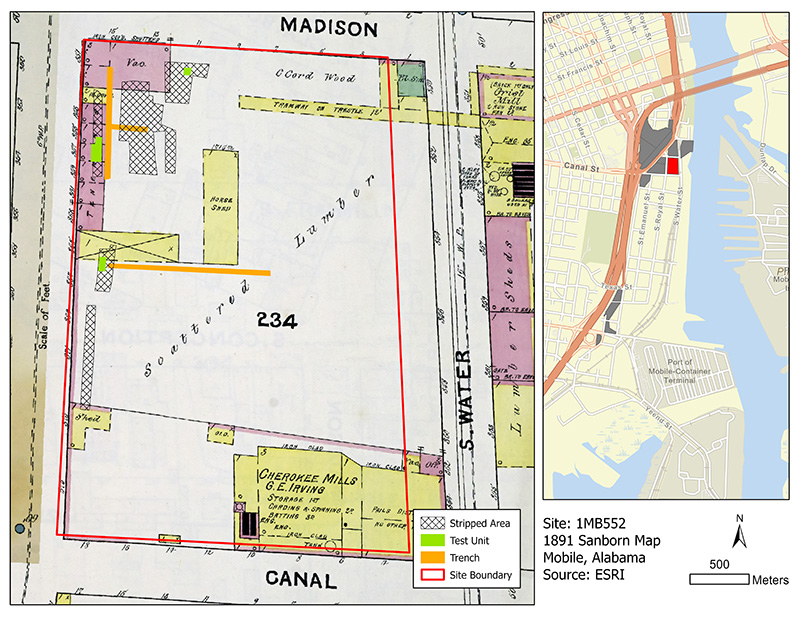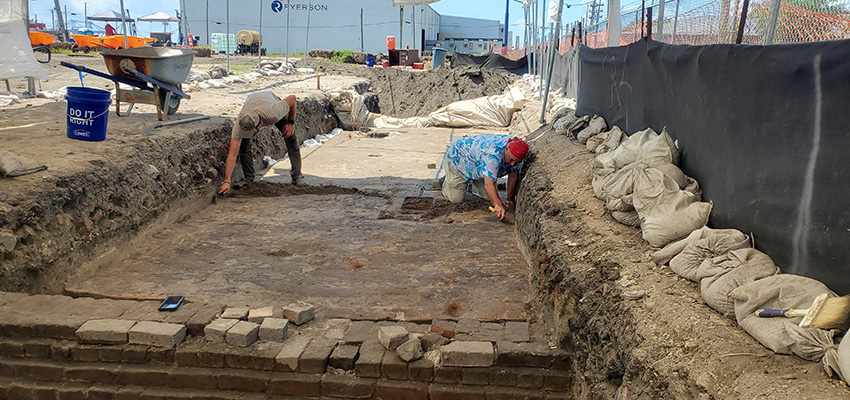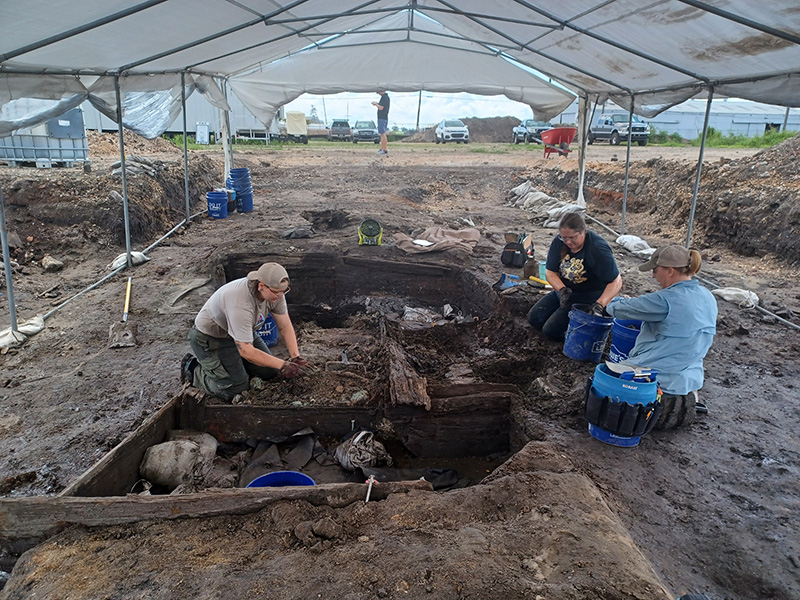Archaeology in Action: The Old Water Street Site
Posted on September 21, 2023 by Rachel Hines
We excavated the Old Water Street Site, or 1MB552, in 2022 as part of the I-10 Mobile River Bridge Archaeology Project. This site is bound by Madison, Old South Water, South Royal, and Canal Streets,
and had some of the most intact structural remains of the entire project. This site
was close to the waterfront and housed industrial facilities by the mid-19 th century,
including lumber mills and a pail factory. Archaeological evidence from these activities
included layers of sawdust and large timbers, which were likely part of a trestled
tramway.

This 1891 Sanborn Fire Insurance Map shows the location of the brick structure in
the top left corner. On a Sanborn Map, red indicates a brick structure, while yellow
indicates wood. Note that the word “Tenements” appears across the building. Our 2022
excavations overlay the Sanborn map. The map on the right shows the location of the
site (in red) and the other sites for the I-10 MRB Archaeology Project (in gray).
In the late 19 th century, a brick building from William Otis’s pail factory was converted into a residential tenement building. We excavated 7 of the 9 rooms of the tenement and found brick supports, remnants of the wooden floor, and artifacts from the people who occupied the room. Very few records exist about the residents of the tenement; however, they do appear in the 1900 census. The residents were all African American and did not work for the lumber industry, indicating the building wasn’t housing for employees on site.
The tenements were managed by Louisa Tucker, who lived in the first room with her daughter, Addie Williams. As we continue to analyze artifacts from this site, we hope to learn more about the lives of the people who occupied the tenement.

Thomas Grace (left) and Phil Carr (right) excavate a room of the brick structure.
One of the other major features at the Old Water Street Site was a double wood-lined privy (shown below) located behind the tenement structure. The privy included layers of deposited trash, and may have been used by the lumber industry workers and/or by the occupants of the tenement building. The tenement building was demolished by 1915, and the lot was used as a sheet metal works and later as the Bender Shipyard.

C. Kirk, Sarah Mattics, and Emily Warner excavate the double privy at the Old Water
Street Site.
You can explore our excavations through a 3d model created by Dr. Alex Beebe of the University of South Alabama Department of Earth Sciences. We’ve excavated 15 sites for the I-10 Mobile River Bridge Archaeology Project. Stay tuned to learn more about our excavations and what we’ve learned so far!


